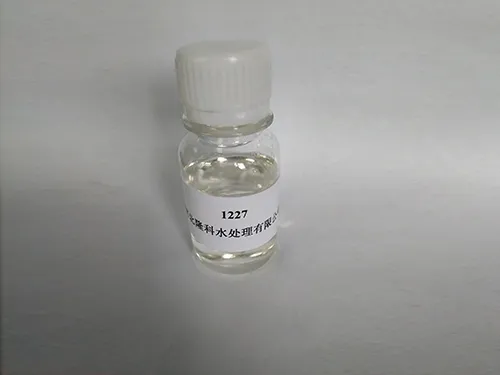partially hydrolysed polyacrylamide
Exploring the Benefits and Applications of Partially Hydrolysed Polyacrylamide
Partially hydrolysed polyacrylamide (PHPA) is a polymer that has gained significant attention in various industries due to its unique properties and versatility. This synthetic polymer is derived from polyacrylamide through a process known as hydrolysis, where a proportion of the amide groups in the polymer chain are converted into carboxyl groups. This modification results in a product that exhibits enhanced solubility in water, making it ideal for a variety of applications.
One of the primary uses of PHPA is in the oil and gas industry, particularly in the process of enhanced oil recovery (EOR). Its ability to increase viscosity in water-based fluids allows for improved displacement of oil in reservoirs. By injecting PHPA solutions into oil fields, operators can increase oil production rates significantly. The polymer enhances the mobility of the oil, allowing it to flow more freely to the production wells. This application not only boosts productivity but also contributes to more efficient resource recovery, making it a valuable asset in energy production.
In addition to its applications in oil recovery, PHPA is also utilized in the field of water treatment. Its flocculating properties enable it to effectively remove suspended particles from wastewater, thereby improving water quality. This makes it essential for municipal water treatment facilities, as well as industries where wastewater management is critical. The ability of PHPA to bind to particulates facilitates the sedimentation process, which enhances the efficiency of filtration systems.
partially hydrolysed polyacrylamide

Moreover, PHPA plays a crucial role in agriculture, specifically in soil stabilization and erosion control. When applied to soils, PHPA enhances water retention and structure, which can lead to increased agricultural productivity. This is particularly beneficial in arid regions where water scarcity poses a significant challenge to farming. By improving the soil’s physical properties, PHPA fosters a more conducive environment for plant growth, thus supporting sustainable agricultural practices.
The versatility of PHPA goes beyond industrial applications. In the field of biomedicine, it is being explored for drug delivery systems and tissue engineering. The biocompatibility of partially hydrolysed polyacrylamide allows it to be used for creating hydrogels that can serve as scaffolds for cell growth. These hydrogels can be engineered to release therapeutic agents in a controlled manner, providing innovative solutions for medical treatments.
Despite its numerous advantages, it is important to handle PHPA with care, as environmental concerns related to synthetic polymers continue to grow. Responsible use and proper disposal methods are essential to minimize any potential ecological impact. Researchers are actively investigating biodegradable alternatives and methods to enhance the sustainability of PHPA applications.
In conclusion, partially hydrolysed polyacrylamide is a multifunctional polymer with widespread applications across various sectors, including oil recovery, water treatment, agriculture, and medicine. Its unique properties facilitate significant advancements in these fields, demonstrating the importance of continued research and innovation. As industries strive for efficiency and sustainability, PHPA stands out as a promising solution that can help meet these goals while addressing the challenges of the modern world.
-
lk-319-special-scale-and-corrosion-inhibitor-for-steel-plants-advanced-solutions-for-industrial-water-systemsNewsAug.22,2025
-
flocculant-water-treatment-essential-chemical-solutions-for-purification-processesNewsAug.22,2025
-
isothiazolinones-versatile-microbial-control-agents-for-industrial-and-consumer-applicationsNewsAug.22,2025
-
scale-inhibitor-key-solutions-for-water-system-scale-preventionNewsAug.22,2025
-
organophosphonates-versatile-scale-inhibitors-for-industrial-water-systemsNewsAug.22,2025
-
scale-and-corrosion-inhibitor-essential-chemical-solutions-for-water-system-maintenanceNewsAug.22,2025





